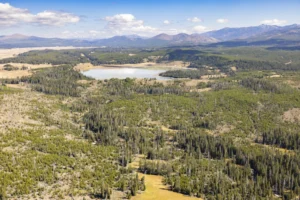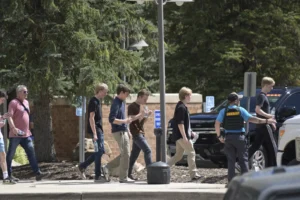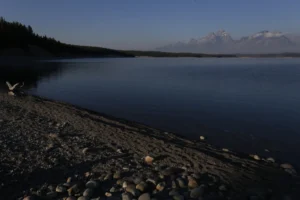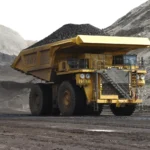Creating The ‘Carbon Capture State’ (Part 1)
In Wyoming’s coal country, an emerging climate technology takes hold
- Published In: Other News & Features
- Last Updated: Feb 15, 2023
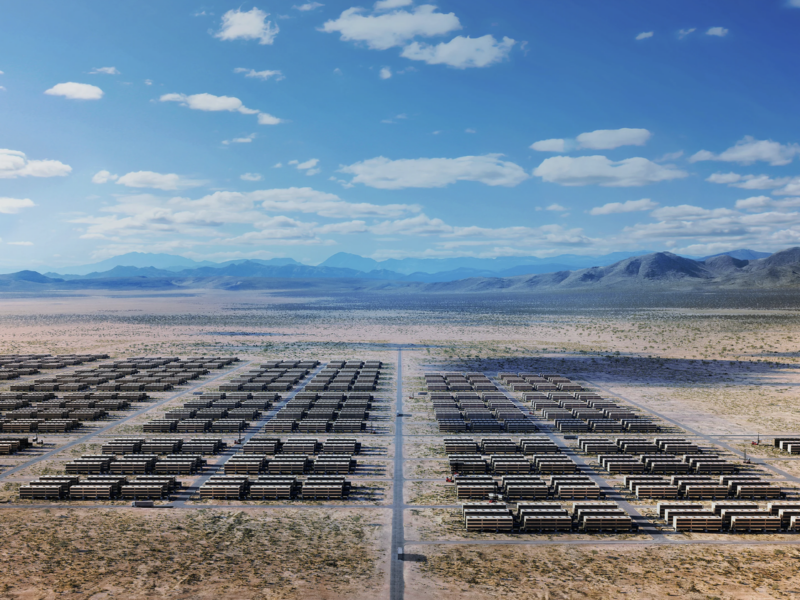
Pictured above is an artist’s rendering of the future Project Bison site with hundreds of direct air capture machines laid out on a rural patch of land in Sweetwater County. (Courtesy image from CarbonCapture Inc.)
By Samuel Gilbert
Special to the Wyoming Truth
This story was updated as of 11:30 a.m. MT on Feb. 15.
In 2021, a record high 36 billion metric tons of carbon dioxide were released into the atmosphere, according to the International Energy Agency. Even if global emissions cease tomorrow, our world will continue to warm.

A livable future will depend on removing C02, and Wyoming has positioned itself as a leader in the growing carbon capture and storage industry through the establishment of the largest carbon removal facility in the world.
By the end of 2023, residents of rural Sweetwater County will welcome the first of dozens of state-of-the-art carbon capture machines to southwestern Wyoming. The modular shipping container-like units – designed to suck CO2 directly from the air – will be stacked atop one another like gigantic shelving units into ever-growing arrays.
The exact location of the facility, known as Project Bison, remains undisclosed. The project is a partnership between CarbonCapture Inc., a Los Angeles-based climate tech company pioneering direct air capture (DAC) technologies, and the Dallas-based CO2 storage company Frontier Carbon Solutions. By 2030, its machines are expected to remove five million tons of CO2 per year, making it the largest carbon removal system in history.
“We have to go much, much further and very quickly to address decarbonizing the atmosphere,” Jonas Lee, Chief Commercial Officer of CarbonCapture, told the Wyoming Truth. “We think Wyoming is a perfect place to do it.”
Wyoming has long championed carbon capture and storage (CCS) as its preferred climate solution, pouring money into the technology and passing legislation favorable to the industry.
“The state of Wyoming is proud to be selected as the first location for megaton-scale direct air capture and to continue our leadership in the storage of CO2,” Gov. Mark Gordon said in a statement to the Wyoming Truth. “Wyoming has the perfect CO2 storage geology and a broad-based energy strategy that includes CO2 sequestration hubs.”
Wyoming is the top coal producing state in the nation, with an attractive regulatory environment, affordable land and a skilled energy industry workforce.
Steven Lowenthal, Co-Chief Executive Officer of Frontier Carbon Solutions, the company tasked with transportation and deep underground storage of CO2 for Project Bison, called Wyoming one of the country’s “most forward-thinking” states regarding carbon capture and storage. “When we first started the business, we looked at where we wanted to participate in carbon capture,” Lowenthal said. “Wyoming was an easy first choice.”
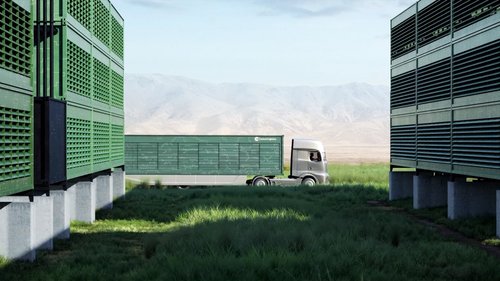
Wyoming’s support is mirrored by new federal incentives for carbon capture and storage technologies in order to reach net zero greenhouse gas emission goals by 2050. President Biden’s Bipartisan Infrastructure Law includes $5 billion to fund the capture of warming gasses, while the 2022 Inflation Reduction Act provides lucrative carbon tax credits.
The result has been a windfall for DAC companies like CarbonCapture, which many view as key to reducing global CO2 levels and mitigating the most disastrous consequences of climate change.
“We have to reduce, right? But we also have to remove,” Lee said about not only cutting but also removing CO2 from the atmosphere. “You can’t reduce your way out of existing emissions.”
But others have expressed concern about the increasing focus and funding on carbon capture rather than clean renewable energy.
An in-depth report by the Institute for Energy Economics and Financial Analysis (IEEAF) on carbon capture and storage systems worldwide found that DAC technology, while having theoretical “environmental and social usefulness,” is not advanced enough “technically and commercially.”
“Direct air capture is energy intensive and expensive,” said Bruce Robertson, the report’s co-author and energy analyst. “We must search for economic answers to climate change and not get enamored with problematic technological solutions.”
Lee believes that while transitioning to renewable energy sources is essential, multiple approaches will be necessary to reduce global CO2 levels, including CCS. “I think we have to take a thousand shots on goal,” he said. “There’s no silver bullet. We’ve got to try everything.”
DAC technology is still in its infancy. Only 18 plants operate worldwide, capturing approximately .01 metric tons of CO2 per year, according to the International Energy Agency. In the net-zero emission scenario by 2050, DAC is projected to capture 60 metric tons of CO2 annually.
Project Bison
Project Bison hopes to meet this growing demand. According to Lee, carbon capture equipment will be tested in outdoor conditions by the end of 2023. However, “full removal, including storage, will depend on several factors that are still being worked out,” he added.
CarbonCapture describes it as “massively scalable,” meaning there is no preset limit to the number of machines that can be added to the site.
“We’re pinned at five megatons [yearly] by 2030,” said Lee. According to the EPA, this is the equivalent of removing approximately one million cars from the road for an entire year. “But the area can support a much bigger facility.”
The exact location of the site is still under wraps. “We expect our DAC systems to be sited near the injection wells, but we’re not yet ready to announce a specific location,” Lee said.
What we do know is that Project Bison will be built on private property in Sweetwater County, largely out of sight from nearby communities and preferably somewhere flat — like a valley or on the plains — to allow for growth.
The machines, which will be color matched to fit the landscape, will be constructed “probably in the US” and “possibly Wyoming,” Lee noted, and transported by train or semi-truck to the site.
The economic impact of Project Bison could be substantial in Wyoming. “There is an opportunity to bring energy jobs into the state,” said Lowenthal, noting the similar expertise of those already working in the energy sector in Wyoming.
Phase 1 carbon removal operations will begin as soon as mid-2023. The DAC machines use filters to absorb CO2 from the atmosphere. From there, the gas is transformed into concentrated CO2 and injected underground. This sequestered carbon is then sold as credits to companies and organizations seeking to offset their emissions. The value of credit subsidies for DAC have increased from $50 to $180.
The technology to separate CO2 and store it underground has been around for decades. The issue has long been a matter of efficiency: What is the energy cost to remove CO2 from the air, and what is the price?
Wyoming’s access to cheap renewable energy, affordable land prices and optimal nearby storage all help to reduce the project cost.
“The basic storage geology of the area in southwest Wyoming can take gigatons of CO2,” Lee said. “A gigaton is the size of Vail Mountain.”
Check back for part 2 coming to you soon.


